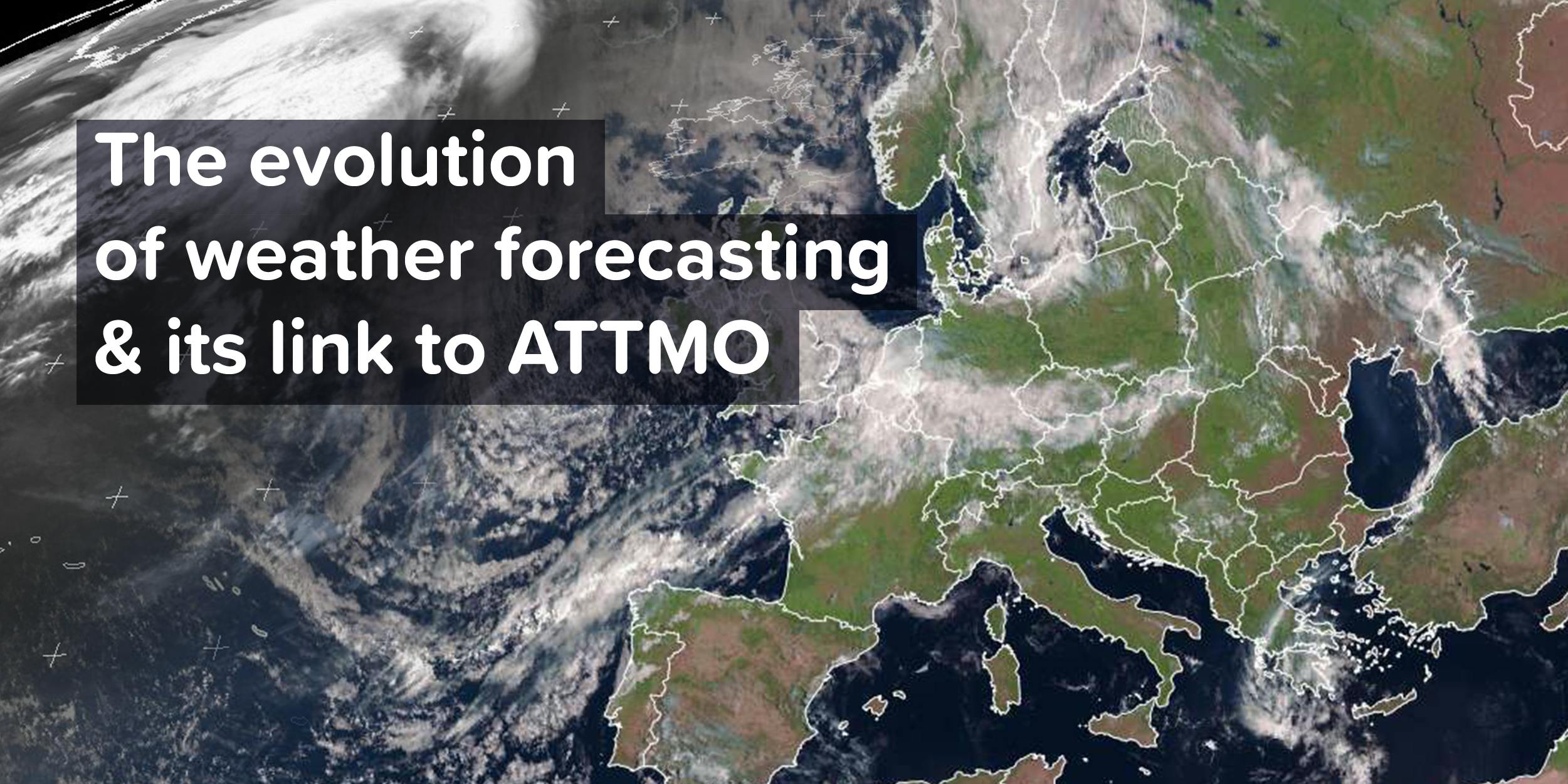The evolution of weather forecasting & its link to ATTMO

- Date
- 01/09/2023
- Written by
- Lykke
- Share
- Leave your opinion (1 reviews)
Lykke forecasts the price movements of cryptocurrencies using a process similar to that used for weather forecasting. Here is some interesting background on how weather forecasting evolved over the centuries.
The first known attempts to predict the weather date date back to the Babylonian Empire around 650 BC. The Babylonians looked at clouds, optimal phenomena such as haloes, analyzed the winds and the behavior of animals to make their predictions. The first attempts of predicting weather in a more scientific way were carried out by the Greek philosopher Aristotle, who lived around 350 BC. He introduced the concept of the four basic elements – air, earth, fire and water – that influence the weather. Chinese astronomers for their part created a calendar with 24 festivals, each of which connected to a certain weather pattern.
But it was only by the 15th century that the first scientific tools were invented: first the hygrometer measuring air humidity, then thermometers followed by the mercury barometer in 1643. This instrument could measure atmospheric pressure and led to a better understanding of the link between pressure changes and changing weather.
Birth of the modern meteorology
Jump forward 200 years with the birth of modern meteorology in 1835 when the electric telegraph was invented. This tool enabled weather reports from wide areas to be communicated and aggregated almost in real time. Weather maps soon started to be used. Two British naval officers, Francis Beaufort (the man behind the wind force scale and reliable tide tables which are still used today) and Robert Fitzroy (who created the predecessor to the modern Meteorological Office) are thought to be behind the development of weather forecasting as we use it today.
A storm, which led to the sinking of the steam clipper Royal Charter in 1859, inspired Fitzroy to develop charts enabling weather forecasts. The data came from 15 land stations that transmitted daily weather reports at set time – the first gale warning service. From 1861, daily weather forecasts began to be published in British newspaper The Times.
First numerical forecasts compiled by computers 60 years ago
Jump forward another century. Then came the first numerical weather forecasts compiled by computers. Weather satellites, doppler radars, radiosondes, buoys and other tools are used to carry out measurements. The predictions are made by gathering quantitative data on the current state of the temperature, humidity, pressure, wind patterns, and a variety of other factors to predict how the atmosphere will evolve at a specific location and over time.
From here, sophisticated mathematical models using the various parameters cited above are used to predict the weather. They also run simulations making slight changes to the inputs to cover for uncertainties. Computer programs are then able to produce forecasts of future weather states. As the storage space and speed of computers increase, the accuracy of the forecasts improves. The application of artificial intelligence (AI), which Lykke already uses to compile its ATTMO cryptocurrency forecasts, will also further improve the weather and crypto forecasts. AI can identify complex patterns in large datasets and thus improve the understanding of the weather’s processes.
Growing market worth billions
The market for weather forecasting services is impressive. Last year, it was estimated at 2.5 billion US dollars and likely to grow by another 9 percent per annum to 6.1 billion dollars by 2032, forecasts by Acumen Research and Consulting show. These figures do not include the socioeconomic benefits associated with weather forecasts, such as early warning systems of storms, tsunamis, heat waves... which save lives.
Weather forecasts are typically published with icons representing the sun, clouds, rain or lightning. Lykke opted for the use of these weather analogies in its cryptocurrency prediction tool ATTMO, since most people are familiar with weather forecasts. Just as you would rely on a weather forecast to plan your day, ATTMO provides indicators using these familiar icons to help crypto traders plan their trading decisions for the hours and days ahead.